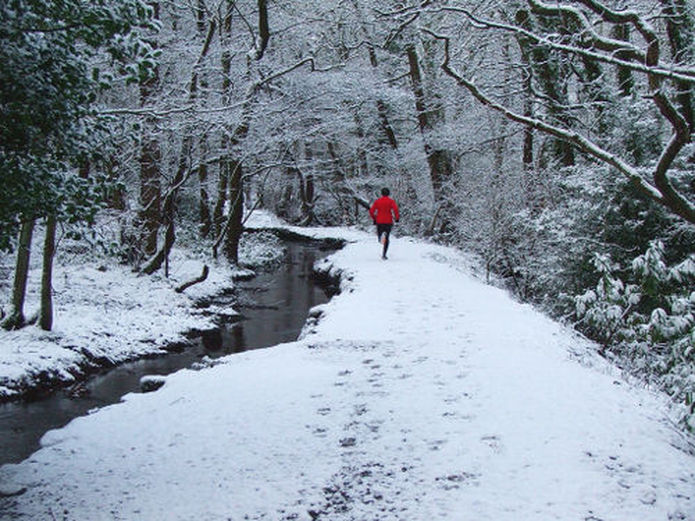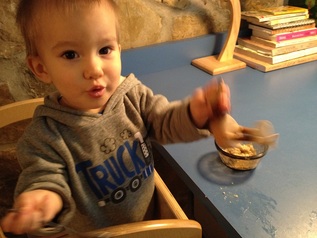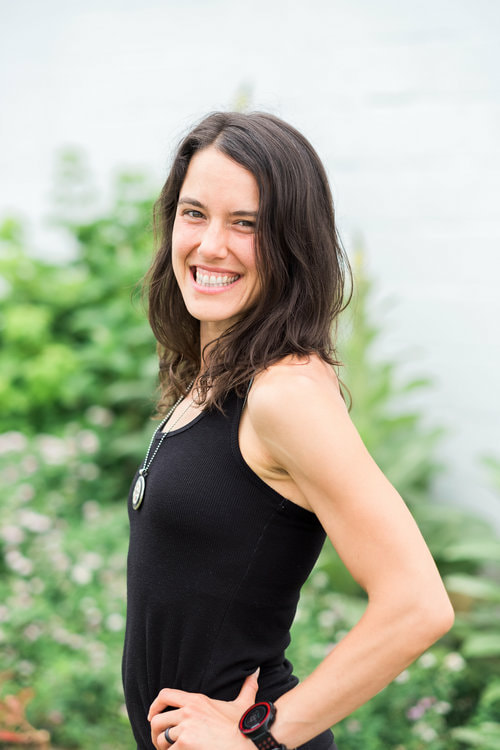Eager to get off the roads and back in the woods, I covered 10 miles on my favorite running route through Ohiopyle State Park... up Baughman's Trail, down Sugarloaf Trail, across Great Gorge Trail, past Cucumber Falls and through the Ohiopyle Falls overlook area before ending back at my vehicle, parked next to the bike trail parking lot. The river was raging and streams along (and sometimes a part of) the trails were in full force, which fueled my run as I listened to the beauty of flowing water.
Even as I delight in the return of spring and melting snow, I think I'll miss my winter runs, through which I gained some valuable insights and lessons. Sometimes I returned home with frozen eyelashes and an accumulation of frost adorning my balaclava, and every time I returned with a huge sense of accomplishment, peace and vigor. Here's what I learned this winter while pounding the ice and snow-covered pavement.
1. Things are more possible and passable than they might first seem. In other words, it was never as cold, snowy, icy or windy as one might have thought by simply peering outside. At first glance out the window or look at the daily forecast, it would have been easy to conclude that running outside was unreasonable. Rather, I took it as a challenge, and with a good warmup routine and the proper attire, I delved into the adventure that is winter running.
Even more, most days my toddler-aged baby boy, Avie, bundled in his warmest winter garb and blankets and snuggled in his BOB Revolution SE all-terrain stroller covered by a protective weather shield, accompanied me. From his cozy cocoon, our runs always lulled him into his daily nap, lasting anywhere from the entirety of our run, usually about an hour, to three hours. It was a win-win situation - I got much-needed outside activity, and he got much-needed rest.
2. Winter running clears the mind, refreshes the soul and uplifts the spirits. Running among a landscape of pristine white offers a quiet, soothing, peaceful stillness that can invoke introspection and serenity simply for the reason that less activity occurs during the cold days between December 21 and March 20. Fewer cars are on the roads and fewer people and animals are out (a welcome relief from the dogs who chase runners in warmer temperatures!). Don't get me wrong, I love animals and people, but a three-month hiatus from the hustle and bustle that we experience during the warmer days of spring, summer and autumn indeed clears the mind, refreshes the soul and uplifts the spirits, prepping us for the rest of the year.
3. Running outside keeps cabin fever at bay. My deepest thoughts come to me while running, and one day I thought this: I am thankful for the healthy feet I have that allow me to put one in front of the other so that I can experience the joys of nature, the fresh air and a sweaty, heart-pumping run session year round. Then my thoughts were led to feeling grateful for the cozy house awaiting my return, a hot bath and a warm meal, which led me to think about the homeless. As wonderful as running outside was this winter, I could not fathom having to stay outside all day and all night. I contemplated how we who have roofs over our heads complain about cabin fever when others would give anything for simply a roof. I dedicated many runs after that to the cold, hungry and homeless. Further, I vowed never to bewail that my home was making me feel cooped up and crazy, and if it was, well, then, I would do something about it, like run.
4. Winter running makes spring and summer races not seem so daunting. Training for one spring race involving a high elevation gain and another involving seven miles of 20-plus obstacles or a summer trail marathon? Yes, yes and yes. With winter training under my belt, I feel confident and prepared as April, May and June, the months of my goal races, approach.
To be specific, here are the miles that I logged this winter: December - 115 miles; January - 121 miles; February - 92.87 miles; and in March, so far, I've run 79.2. What it typically broke down to was an average of 25 to 30 miles per week, with the highest mileage week being 35 and the lowest mileage week, my mid-season rest week, adding up to 15, during which time I replaced runs with spin biking. Usually daily runs consisted of four to seven miles, but sometimes it was three or eight and most recently my longest postpartum run yet, a 10-miler. I have been focusing on various types of runs, too, such as hill runs (my favorite), long runs, speed workouts, tempos and recoveries. What I'm saying is this: I feel ready to race!
5. Winter running proves the simplicity, freedom and flexibility of the sport. By simplicity, I mean this: running requires minimal gear, whereas my three other favorite sports, white water kayaking, mountain biking and rock climbing, require an array of pieces that are heavy, large, not multifunctional and/or costly, which makes traveling with them burdensome and also costly, if we're talking about airplane travel. On the other hand, running requires shoes (currently I'm donning the Hoka One One Clifton and loving them) and clothes, which can be multifunctional, i.e. I can wear them to do yoga or other activities. If we want to get uber minimalist, we don't even need clothes or shoes to run - our bodies do the work for us! But without specific gear, kayaking, mountain biking and rock climbing would not happen, even if we lost our shoes or clothes!
By freedom and flexibility, I mean this: we can take running anywhere, anytime. It travels with us, because, essentially, our body is our apparatus. For instance, when I spend the night at my sister's, or even visit her for the day, all I have to do is toss my shoes and clothes in a bag, or borrow her clothes if I've forgotten mine, open the front door and run. Freedom from gear or the need to get to the right location makes running the ideal sport. Further, we can run on a wide range of surfaces, including dirt, snow, ice, mud, road, track, sidewalk, beach, forest floor, grass, cinder and city street, whereas with kayaking we need water and rock climbing we need rock. Third, we can do it in the morning, afternoon, or evening - in fact, some of my favorite winter runs were underneath the moonlight, after the sun set, or early in the morning, before the sun rose. Lastly, we can do it, as this winter has proven, in all weather - scorching hot, bitterly cold, wet and rainy, windy, in hailstorms and blizzards, in sun and snow.
To sum up, I ring in the springtime with a sense of ecstatic elation for my efforts this winter; for the coming season of racing; for the desire to run through figurative and literal rain or shine; for running's positive physical, mental, emotional and spiritual benefits; and for my ongoing, ever-evolving, always-deepening relationship with the life-changing sport of running, which is, in fact, more than a sport - it's a way of life.




 RSS Feed
RSS Feed